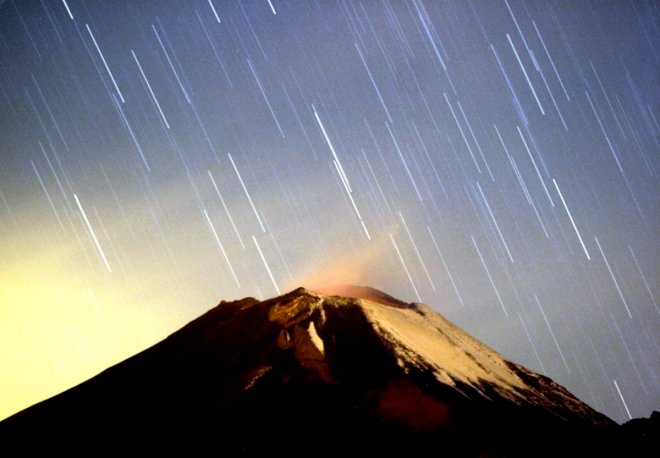
The Geminid meteor shower in the early phase of December would come as a spectacular event in the night sky with a potential hidden danger for Earth passing by at just 2 million miles away from the planet. The 3200 Phaethon asteroid which has been categorized as a "PHA"- a potentially hazardous asteroid of 5km width would pass near the earth much closer than the safe distance for a near earth object.
The asteroid is believed to have half the size of the asteroid or comet that had apparently hit the earth 65 million years ago, wiping out the dinosaurs. Astronomers predict that the 3200 Phaethon would fly past Earth just a few days before this year's Geminid meteor shower. It is expected on December 10 and would be visible like a 14th magnitude star in the constellation Virgo.
Phaethon, which was discovered on October 11, 1983, using the Infrared Astronomical Satellite could be classified as an asteroid even though some of its features are similar to comets. It was named after the Greek mythological character Phaethon, son of the Sun god Helios.
The mysterious Phaethon is different as it is behind the Geminid meteor. Asteroids do not usually form meteor showers and comets were always known to make them. The Phaethon has been regarded as the reason for the only asteroidal meteor shower, Geminids.
Comets evaporate intense heat vapors from its "dirty ice" while it flies close to the sun resulting in high-speed jets of comet dust spewing into the interplanetary space. These comet dust rupture into a bright flash of light seen as meteors when it hits the Earth's atmosphere at a speed of ~100,000 mph. Meanwhile, the asteroids, which are solid rocky objects do not discharge dust into space. This creates doubts among astronomers to classify the 3200 Phaethon.
Bill Cooke, a NASA astronomer of the Marshall Space Flight Center said, "I think 3200 Phaethon used to be a comet."
Several theories favor this idea. One theory states that highly elliptical orbit of Phaethon brings it extremely close to the Sun nearly twice as close as Mercury. Phaethon passes through the inner solar system in every 1.4 years which could dry up the entire ice leaving a dry rocky skeleton similar to an asteroid.
Another theory of a possible collision explains the formation of the space dust constituting the Gemini. The theory states that another asteroid might have collided with the Phaethon leading to the formation of the dust and changes in the orbital of the asteroid. Scientists, however, say that such collisions are not very likely to happen.
Yet another theory about the Phaethon states that it broke away from another object ejecting meteors as its debris.
An asteroid named 2012 TC4 had passed nearby earth on this Oct. 12 at a distance just above the orbital altitude of communication satellites.
First Geminid meteors appeared during the US Civil War and had been regular every year in mid- December.
The Geminid meteor shower could be seen on December 13, from around 10 pm. The meteor shower would peak after the midnight and could be watched until the dawn of December 14. Dozens of bright meteors would streak across the sky per hour during the time.
The best place to watch a meteor shower is in rural environment which is not polluted by intense lights. Simple telescopes could help to view the meteors.








